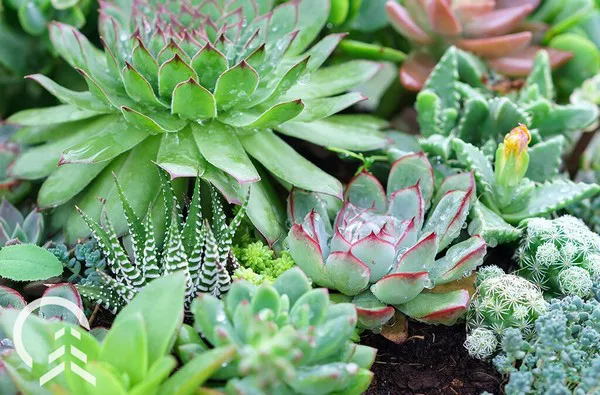Succulents have gained immense popularity in recent years due to their unique beauty and low maintenance requirements. These plants, known for their fleshy leaves and ability to store water, are often grown indoors or outdoors as decorative additions to homes and gardens. However, succulents are not exempt from insect attacks. Understanding the common insects that feed on succulents is crucial for maintaining the health and vitality of these beloved plants. In this article, we will delve into the world of succulent-eating insects, exploring their feeding habits, damage signs, and effective methods for prevention and control.
1. Mealybugs: Tiny Pests with Big Appetites
Mealybugs (family Pseudococcidae) are among the most notorious insects that feast on succulents. These tiny, soft-bodied pests are covered in a white, powdery wax that helps protect them from predators. Mealybugs extract sap from succulent leaves and stems, leaving behind a sticky residue known as honeydew. The accumulation of honeydew can attract ants and lead to the growth of sooty mold, further compromising the plant’s health.
2. Aphids: Sap-Sucking Troublemakers
Aphids (family Aphididae) are another common group of insects that pose a threat to succulents. These small, pear-shaped pests come in various colors and can multiply rapidly under favorable conditions. Like mealybugs, aphids pierce succulent tissues to extract sap, weakening the plant. They also secrete honeydew, creating ideal conditions for fungal growth and attracting other insects.
3. Spider Mites: Silent Destroyers
Spider mites (family Tetranychidae) are tiny arachnids that may go unnoticed until significant damage has occurred. These minuscule pests are known for their ability to spin fine webs and feed on succulent leaves by puncturing plant cells and extracting their contents. Spider mite infestations can cause discoloration, wilting, and eventually the death of affected succulents if left untreated.
4. Scale Insects: Stealthy Invaders
Scale insects (order Hemiptera) are characterized by their hard, shell-like covering that protects them from predators and environmental conditions. They attach themselves to succulent stems and leaves, feeding on plant sap. As they feed, they secrete a waxy substance that forms a protective covering known as a scale. Scale infestations can lead to stunted growth, yellowing, and leaf drop in succulents.
5. Caterpillars and Larvae: Chewers of Succulent Foliage
Caterpillars and larvae belonging to various moth and butterfly species can also be a threat to succulents. These voracious chewers consume succulent foliage, leaving behind ragged edges and holes in the leaves. Although not as common as other insects, caterpillar and larvae infestations should not be overlooked when diagnosing potential pest issues.
Prevention and Control
Preventing insect infestations is crucial for maintaining the health and appearance of succulents. Here are some effective methods for preventing and controlling insect attacks:
Inspect New Plants: Before introducing new succulents to your collection, thoroughly inspect them for signs of pests. Look for webs, sticky residue, white cottony masses (indicative of mealybugs), or any other visible signs of infestation.
Isolate Infested Plants: If you notice signs of insect activity, promptly isolate the affected plants to prevent further spread. Keep them away from healthy succulents until the infestation is under control.
Physical Removal: For small-scale infestations, manually removing insects can be effective. Use a cotton swab dipped in rubbing alcohol to dab and remove mealybugs, aphids, or scales from affected areas.
Natural Predators: Encourage natural predators like ladybugs, lacewings, and predatory mites to control insect populations. These beneficial insects feed on pests and can help keep succulent-eating insects in check.
Neem Oil and Insecticidal Soaps: Consider using organic insecticides such as neem oil or insecticidal soaps. These products effectively control a wide range of succulent pests while minimizing harm to beneficial insects.
Conclusion
Insects pose a significant threat to the health and vitality of succulents. Being aware of common pests and their feeding habits is essential for preventing and controlling infestations. Regular inspection, prompt action upon detection, and implementing preventive measures can ensure that your succulents remain healthy and beautiful. By understanding the culprits that eat succulents and adopting appropriate pest management strategies, you can enjoy thriving succulent gardens both indoors and outdoors.


